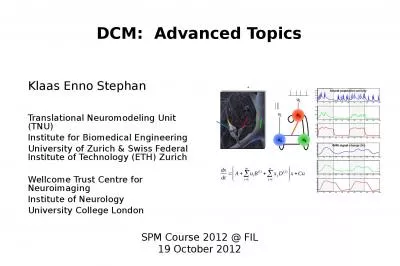PPT-Separation logic for OO Stephan van
Author : sistertive | Published Date : 2020-06-23
Staden Introduction OO languages are popular and widely used We need to reason about OO programs Some problematic features of OO languages Shared mutable state Inheritance
Presentation Embed Code
Download Presentation
Download Presentation The PPT/PDF document "Separation logic for OO Stephan van" is the property of its rightful owner. Permission is granted to download and print the materials on this website for personal, non-commercial use only, and to display it on your personal computer provided you do not modify the materials and that you retain all copyright notices contained in the materials. By downloading content from our website, you accept the terms of this agreement.
Separation logic for OO Stephan van: Transcript
Download Rules Of Document
"Separation logic for OO Stephan van"The content belongs to its owner. You may download and print it for personal use, without modification, and keep all copyright notices. By downloading, you agree to these terms.
Related Documents














